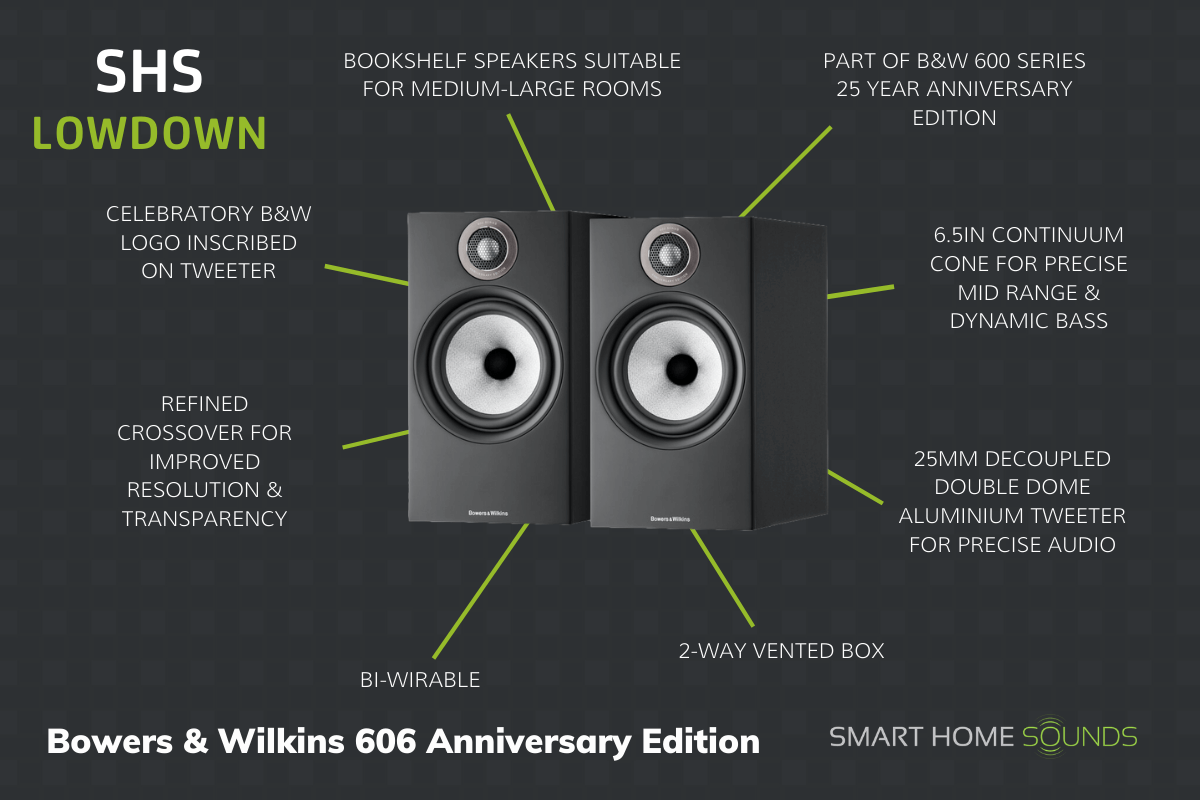

Housing anechoic chambers and extensive Bruel and Kjaer measurement equipment, the research team investigated phase linearity and speaker cone construction using laser interferometry. B&W received the Queen's Award for Export in 1973, and built programme content monitors for the BBC. After a tenfold increase in export since 1973, the second Queen's Award for Export is awarded in 1978.The patented use of Kevlar fibres, impregnated with a stiffening resin, resulting in B&W's distinctive yellow speaker cones started in 1974. In 1972 a new production facility was opened in Meadow Road, Worthing. Good press reviews made exports start to rise. The distinct shape of the loudspeaker won a British Industrial Design Award. The sizeable DM70 from 1970 combined electrostatic mid- and high range on top of a traditional bass unit. The profits of the P1 allowed Bowers to purchase a Radiometer Oscillator and Pen Recorder, allowing for calibration certificates for every speaker sold. In 1970, the ionovac-tweeter equipped P2 speakers produced were licensed by Sony, produced in Worthing to be distributed in Japan. Bowers decided to develop a loudspeaker wholly built in-house.


The cabinet and filter were B&W's own, but the drivers came from EMI and Celestion. The first production line was established in the workshops in the shop's backyard. The 1967 P1 was the first commercial speaker from B&W. and was no longer involved with the electronics shop in which he had been a partner. As well as maintaining the cabinet’s weather-tight seal, the ABR gives the AM-1 truly remarkable bass response for a speaker of its kind.Bowers & Wilkins, or B&W, is a British company that produces audio equipment, most notably loudspeakers. In 1966, John Bowers started a separate business – B&W Loudspeakers Ltd. Instead of the Flowport™ found in our traditional speakers, AM-1’s cabinet integrates a rear-mounted auxiliary bass radiator (ABR). With AM-1, Bowers & Wilkins has come up with an ingenious solution to the problem of producing powerful bass from a weatherproof speaker. Combine this with minimal wall projection and a design that allows the speaker to be angled through 220 degrees, and you have a discreet, versatile monitor that can provide you with pristine sound almost anywhere. The speaker combines tried and trusted technologies with new innovations – like an inverted driver array for optimum sound dispersion when the speaker is mounted high on a wall, and an advanced bass radiator design that maximizes low-frequency performance while keeping the speaker sealed from the elements.ĪM-1 has been carefully designed to be easy to install, and its elegant cast aluminum wall bracket incorporates an ingenious one-plug mounting system. AM-1 takes everything we know about high-performance audio and adapts it to meet the demands of a versatile, all-weather monitor.


 0 kommentar(er)
0 kommentar(er)
